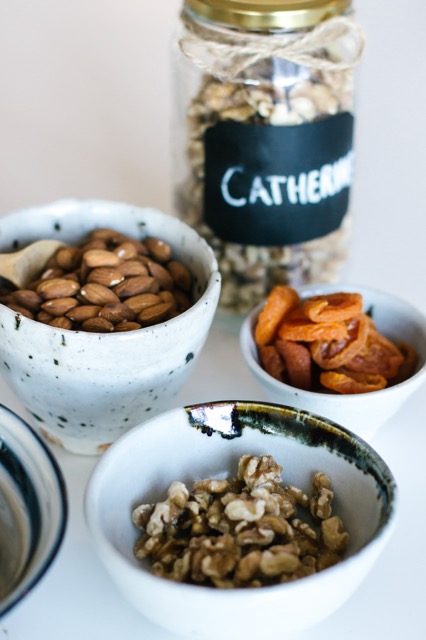Food variety boosts nutrition and ensures good health

Eating a wide variety of foods is a key principle in nutrition. It’s so important that the official government guidelines on healthy eating state ‘Eat a wide variety of nutritious foods’ as their first guideline, ahead of guidelines that we limit saturated fat, choose foods low in salt, limit your alcohol and prevent weight gain. I can't stress how much variety matters. Think swings and roundabouts! Study after study shows that those of us who eat a wide variety are in better health and live longer than those who don’t.
What is food variety?
Variety doesn’t mean six different cereals in the cupboard or different biscuits for morning tea. It means a range of biologically diverse foods. For example with fruit, don’t just buy apples, mandarins and bananas but extend your fruit bowl to rockmelon, blueberries, grapefruit and cherries (and everything else that’s in season). Where one fruit is low in a vitamin or an antioxidant, you make up from another. Lots of different colours in your fruit and vegetables mean lots of different antioxidants.
People usually think of variety in terms of different fruit and vegetables with all their colours and shapes. But it applies to all food groups including grains.
If you’re eating Weet-bix for breakfast, a sandwich for lunch and pasta for dinner, you’re basically eating the ONE grain wheat. Yes it’s a versatile and nutritious grain but you shouldn’t just stick to wheat. To get the most nutrients, branch out into rye (for crispbread or bread), oats (porridge and muesli), barley (in soup), buckwheat and quinoa (in salads and side dishes).
What number to aim for in food variety?
Some guidelines suggest eating 30 biologically-different foods each day. Around 20 is a good initial goal. It sounds daunting at first but it’s not that hard. If you make up a muesli at home, as I often do, you’ll be mixing in 9 different foods – two types of nuts (almonds, walnuts), two types of seeds (pumpkin, sunflower), two grains (oats, psyllium), three fruits (sultanas, apricots, currants). Plus the milk or yoghurt and fresh fruit you have with it - and that’s just for breakfast. Check out the ingredients below ...
Catherine's home-made toasted oat muesli
Here's one of my fave home-made toasted muesli ideas. Honestly it works well with just about any seed, nuts or dried fruit. Just start with the oats as your base and go from there!
 9 ingredients in my muesli for variety:
9 ingredients in my muesli for variety:
- 2 cups rolled oats
- ½ cup pumpkin seeds
- ½ cup sunflower seeds
- ½ cup slivered almonds
- ½ cup chopped walnuts
- ½ cup psyllium or rice bran flakes (optional - for extra fibre)
- ½ cup sultanas
- ¼ cup chopped dried apricots
- ¼ cup currants
To serve:
- milk or yoghurt
- sliced peach or strawberries or banana or other seasonal fruit, whatever you have in the kitchen
For all the details of how to toast this muesli, click here to view.
7 easy ways to get more variety into your daily diet
1. Serve 4 or 5 different vegetables for dinner, not two. If you’re cooking for one or two, cut your vegetables about the same size so you can simmer them in just one pot and they’ll cook in the same time. Saves on washing up.
2. Turn up the heat under your wok and stir fry onion, garlic and then toss in as many sliced or diced vegetables as you can – capsicum, mushrooms, zucchini, cabbage, chilli, garlic, onion, carrot, green beans, snow peas as well as leaves like baby spinach or a handful of coriander to finish.
3. Toss together a large mixed salad with many different salad leaves and fresh herbs instead of just lettuce.
4. Make up a fresh fruit salad using 4 or 5 different fruit. Top with the pulp of a passionfruit. Or buy a fruit salad when you’re passing a fruit bar or lunch place.
5. Flavour your cooking with different spices and herb blends – they help you cut back on salt and are incredibly rich in phyto-chemicals (antioxidants) for longevity and top health.
6. Throw in a handful of nuts or seeds or bran to a bought muesli. Commercial mueslis never have enough interesting ‘bits’ in them, in my opinion.
7. Try different herbal teas – peppermint, rooibos, chamomile, ginger as well as blends. You can keep tea bags of the various herbal teas so you can mix and match to your mood.
Downloads / Fact Sheets
![]() Salads are great ways to boost the variety of what you eat. Download my Fact Sheet on "A salad a day keeps the dietitian away".
Salads are great ways to boost the variety of what you eat. Download my Fact Sheet on "A salad a day keeps the dietitian away".
Read my article on "You are what you eat".



